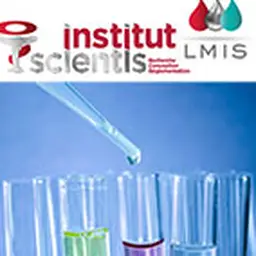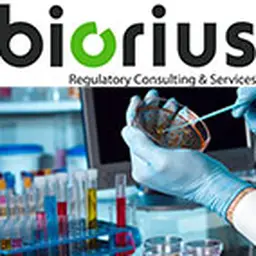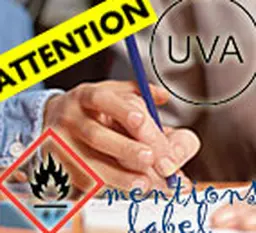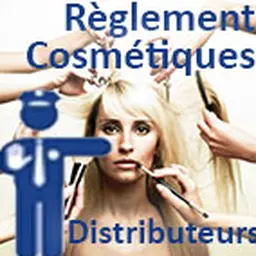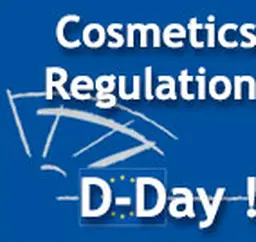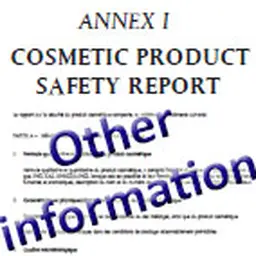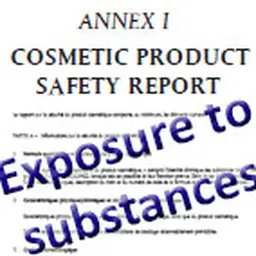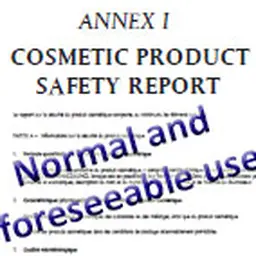
Under European regulations, about 1,400 substances are banned in cosmetics. Theoretically, they are prohibited in all product formulas. In practice, some of them can still be found in various products, even if it is in a very small quantity – trace amounts. Dr Frédéric Lebreux, General Manager of Biorius (specialized in regulatory consulting and support services to businesses), makes an update on the notion of trace and on the management of traces of banned substances in cosmetics in Europe.
In Europe, the assessment of cosmetic products and their safety of use is based on the characterization of the risk for human health represented by every single ingredient. As a consequence, a distinction needs to be made between risk and hazard: if hazard is the intrinsic property of a substance with the potential to cause harm to human health, risk is the likelihood of a danger in a given exposure scenario.
Not clear enough? Well then, let’s say that, due to its sharp fangs and fearsome claws, the lion is intrinsically dangerous. In the light of this analogy, European Cosmetics Regulation (EC) no 1223/2009 prefers exposure management (e.g.: special authorization to own a lion, safety measures in zoos) to hazard management (e.g.: euthanizing all lions living in Europe, banning safaris).
Still, this ‘risk assessment’ paradigm has limits and exceptions: the Regulation provides for the outright ban (hazard management) of a number of substances deemed too harmful or whose perception by European consumers is very poor. These substances are gathered in Annex II of the Regulation in the form of a ‘negative’ list, since it prohibits the use of the ingredients listed. In practice, the list contains about 1,400 entries forming an eclectic mixture of both substances very likely to end up in a cosmetic product (e.g. heavy metals) and others that have – in principle – never been in contact with a day cream or shampoo (e.g. carbon monoxide, radioactive substances, rat poison…).
Authorized hazard trace
However, this ban is not as strict and implacable as it seems, since Article 17, a tiny Article in the Cosmetics Regulation, introduces a most useful notion of tolerance for product manufacturers. In short, it is deemed accepted that a cosmetic product contains traces of banned substances, provided these traces satisfy three essential criteria.
• ‘ Unintentionality’ criterion : it should be an impurity, not an ingredient. The concept of ‘incidental ingredient’ defined in the American cosmetics legislation (CFR Title 21 § 701.3) does not exist in Europe, and the principle of ‘intention’ should be taken in its strongest meaning. For example, a raw material preservative is considered as intentionally added to the finished product, so Article 17 does not apply.
• ‘ Unavoidable’ character in Good Manufacturing Practices : the raw material manufacturer should make sure he minimizes the presence of the impurity. As for the cosmetic product manufacturer, he is invited to get informed on the state of the art before purchasing any raw material. He can easily make a distinction between common practice and what is not acceptable from a regulatory standpoint by collecting Safety Data Sheets (SDS) and communicating with the main suppliers.
•
Trace safety
: the safety assessor should study the toxicological profile of the impurities, just like all the other substances in the finished product composition. For more information, the 9
th
edition of the SCCS Notes of Guidance (SCCS/1564/15) is an essential reference.
It should be added that the Responsible Person should demonstrate these criteria are satisfied and prove the inevitability of these traces in the finished product.
A trace in no quantity
But, what does ‘trace’ actually mean? The European Cosmetics Regulation does not formally define the concept of ‘trace’, it only mentions a ‘small quantity’ – not very explicit. Likewise, the ICCR (International Cooperation on Cosmetic Regulation) defines a trace in their ‘Principles for Handling Traces in Cosmetics’ as ‘very low amounts of impurities and/or contaminants in a finished product’.
Then, what does ‘small quantity’ refer to? In some cases, the value is defined by the legislation, in particular in the Cosmetics Regulation Annexes. For example, Safrole is banned in Entry 360 of Annex II, but it is still tolerated in natural ingredients, as long as its concentration in the finished product does not exceed 100 ppm (allowing for exceptions).
In all other cases, and as stated in Commission Implementing Decision 2013/674/EU, a ‘small quantity’ is related to the safety assessment to be carried out by the person in charge. As Paracelsus said, ‘All things are poison and nothing is without poison; only the dose makes a thing not a poison.’ In other words, the concept of ‘trace’ does not refer to a single value, but to a calculation made on a case-by-case basis, based on the toxicological properties of a substance. So, to determine the trace, the NOAEL should be used – it plays a pivotal role in the chronic toxicity studies available –, as well as the NESIL, obtained with skin sensitization studies, etc. Other approaches like the Threshold of Toxicological Concern (TTC) may also be used in certain specific cases, in particular when the absence of toxicological data makes the usual methods unworkable.
Traces to be avoided
Two particular cases need to be mentioned.
• Traces of substances for which risk cannot be easily quantified, because they are not related to any threshold effect (e.g. genotoxic or carcinogenic substances). Here, the cosmetic product manufacturer should pay particular attention to the unavoidable nature of the impurity and do everything he can to find an alternative to the raw materials used. In addition, the safety assessor may use specific approaches to quantify the risk posed by the carcinogenic substances. For example, the Linearized Multistage Model used by OEHHA as part of the Prop 65 legislation is now considered a reference method.
• Traces of substances derived from the degradation of an ingredient in the finished product due to a stability issue. In this case, the cosmetic product manufacturer should do his best to avoid these traces through a strict implementation of Good Manufacturing Practices and, if needed, resign himself to reformulating the product.
Fred Lebreux
Directeur Général de Biorius
About Fred Lebreux
 Fred Lebreux holds a Ph.D. in Organic & Medicinal Chemistry and a Master in Management. After a post-doctoral position at the Ecole Polytechnique in Paris where he developed new pathways for the synthesis of biologically active substances, he was hired by IFRA, the International Fragrance Association. After a few years at the position of IFRA Scientific and Regulatory Manager, he was promoted IFRA Scientific Projects Manager. In both positions, Fred actively contributed to defend the collective interests of the global fragrance industry.
Fred Lebreux holds a Ph.D. in Organic & Medicinal Chemistry and a Master in Management. After a post-doctoral position at the Ecole Polytechnique in Paris where he developed new pathways for the synthesis of biologically active substances, he was hired by IFRA, the International Fragrance Association. After a few years at the position of IFRA Scientific and Regulatory Manager, he was promoted IFRA Scientific Projects Manager. In both positions, Fred actively contributed to defend the collective interests of the global fragrance industry.
After five years with IFRA, Fred joined Biorius at the position of Scientific and Regulatory Director. At Biorius, the leading consultancy company in scientific and regulatory services for the Cosmetic Industry, he developed further the competences of his team, ensured the quality of deliveries, improved important processes, created effective working relationship with Biorius’ clients and solved complex issues.
In October 2015, the Board of Biorius nominated Fred Lebreux as the new Chief Operating Officer, entrusting him the daily operations of the company. In his new role, Fred took over the global supervision of the Department of Operations and the Department of Scientific and Regulatory affairs and will contribute to strengthen their current organization.
Beyond its corporate responsibilities, Fred is recognized as an expert in its field and regularly writes for several internationally renowned journals. For several years, he also teaches the Regulatory Toxicology and the Cosmetics legislation at the ISIPCA School.
© CosmeticOBS-L'Observatoire des Cosmétiques

